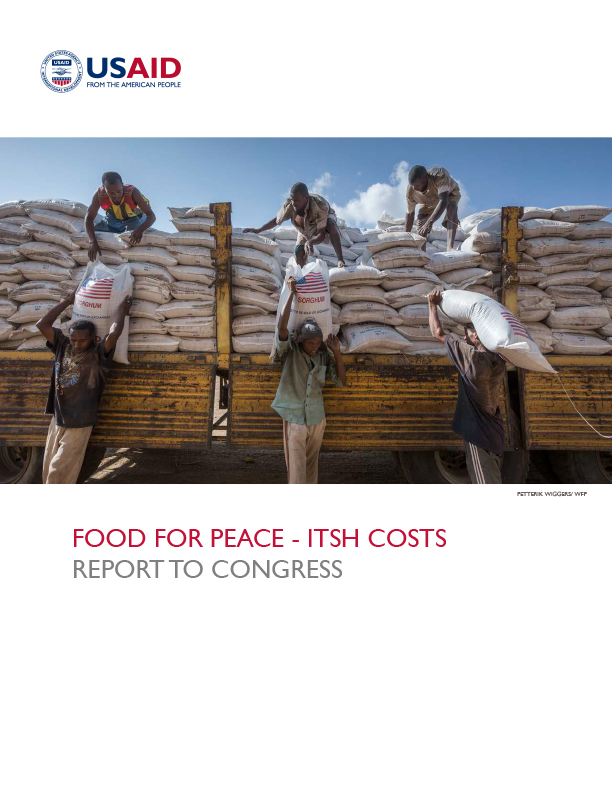Speeches Shim
Pursuant to House Report 114-531, which accompanied H.R. 5054, the Department of Agriculture Appropriations Act, 2017, the U.S. Agency for International Development (USAID) is pleased to submit this report, which outlines how USAID defines and uses Internal Transportation, Storage, and Handling (ITSH) costs within programs funded by Title II of the Food for Peace Act.
The Committee directs the Department and USAID to provide a clear definition of these costs, how they are incurred, and how they differ from Inland Freight Costs. The Committee is concerned that these costs have increased significantly in recent years and seeks to understand the causes. The Committee also directs USAID to identify whether local and regional purchases, cash, and vouchers are counted as a part of these costs. USAID is directed to provide this information within 60 days of enactment of this Act.
Definition of ITSH and Inland Freight costs
Sections 406 and 407(c)(1)(B) of the Food for Peace Act (7 U.S.C. §1736 & §1736a) provides the authority to pay for the associated costs for the movement of Title II commodities, including internal transportation, storage, handling, inland freight, and other incidental costs. Consistent with this authority, USAID outlines its definitions for ITSH and Inland Freight costs in the annual International Food Assistance Report and the Food for Peace Information Bulletin (FFPIB) 14-01. The U.S. Department of Agriculture (USDA) has complementary definitions for its programs, consistent with the activities it supports:
- USAID defines Inland Freight costs as costs required to move commodities through the transit country in the case of landlocked countries, or instances in which commodities cannot be delivered to a port in the destination country because of conflict or natural disaster. Inland Freight funds are awarded for transport from the discharge port to the extended delivery point (the first warehouse) or designated point(s) of entry (the border crossing) within the destination country. Inland Freight costs represent a subset of ITSH; however, USAID is required to track and report on Inland Freight costs separately from ITSH costs because of the reporting requirements outlined in the Food for Peace Act.
- USDA defines Inland Freight costs as the transportation costs from port of discharge to the implementing partner’s designated warehouse, which is either at a port or, in the case of a landlocked country, the border. This cost includes everything from the transport of the commodities from the designated discharge port to the identified initial storage site and stacking the commodities in a designated warehouse.
- USAID defines ITSH costs as the direct program costs of a Title II emergency program or a non-emergency program in a Least Developed Country (LDC) associated with the in-country movement, management and monitoring of Title II U.S. agricultural commodities necessary for distribution, and in direct support of eligible Title II activities.
- USDA defines ITSH costs as the costs of transporting commodities from the implementing partner’s warehouse (at the port or border) to each school’s storage site, unloading and storing the commodities at the school warehouse, and handling and distributing the commodities from the school’s warehouse to the designated school.[1]
[1] USDA incurs ITSH costs in the course of administering its McGovern Dole Food for Education Program.


Comment
Make a general inquiry or suggest an improvement.